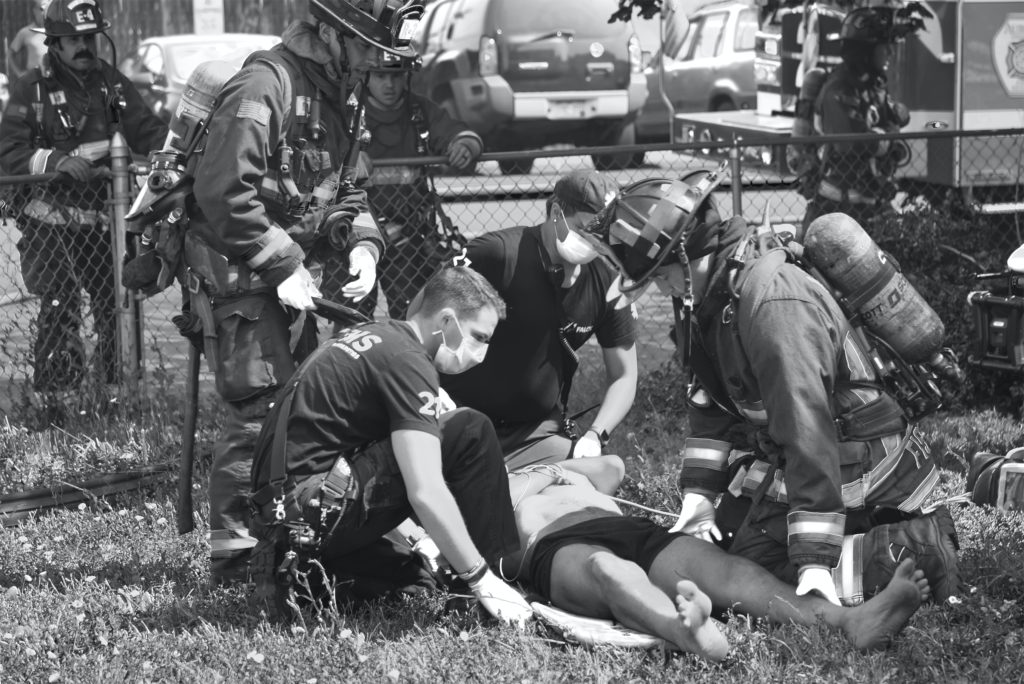
You may always find EMS personnel (paramedic and emt) helping people who are experiencing medical emergencies or rescuing accident victims on the news or in TV dramas. The majority of EMS responders hold either an EMT or paramedic level of certification. Both perform their work in a range of capacities and healthcare environments. They frequently work with fire departments, industrial safety, ground ambulances, and helicopters.

What makes them different from one another if they both help patients and wear uniforms?
There are various levels of provider certifications in the emergency medical services (EMS) industry. The most prevalent EMS service providers are Emergency Medical Technicians (EMTs), also known as EMTs. The fundamental abilities needed to assist in life-threatening situations are taught to EMTs, and many of them go on to obtain an Advanced EMT credential or become Paramedics. Numerous physicians, nurses, and firefighters have also used their EMT training and employment as stepping stones in their professional careers.
Students who want to become Emergency Medical Technicians (EMT) must finish a course that lasts at least 170 hours. EMTs are trained to assess patients and identify any potential life-threatening injuries or illnesses. This includes providing life-saving epinephrine to a patient having an allergic reaction, splinting injuries for a patient following a car accident, or even doing CPR on a patient experiencing cardiac arrest. The EMT will also learn how to deliver a newborn, use a bag valve mask to ventilate, administer oxygen, and even administer various drugs. The best tool in an EMT's toolbox and the main focus of their training is assessment, or the ability to swiftly determine if someone is dying.
The majority of the time, no prior medical training is required in order to participate in an EMT course. Schools may have different eligibility standards and prerequisites for their EMT and paramedic course. Before enrolling in a course, make sure to verify the regulations of the institution and your state. For instance, in California, becoming a certified EMT requires that you be at least 18 years old.
Students enrolled in the Paramedic (PM) course must finish a course load of 1,200–1,800 hours over the course of six–12 months. Anatomy and physiology, cardiology, drugs, and medical procedures are all included in paramedic courses. Training for paramedics builds on EMT instruction and teaches skills including inserting intravenous lines, managing advanced airways, interpreting patient EKGs, and learning how to treat patients who are experiencing life-threatening medical or traumatic emergencies.
A paramedic must be prepared to aid patients during their shift, whether it is caring for car accident victims, reading an EKG for a heart attack patient, or giving birth. It never becomes dull! Students are trained to pass the national certification examinations and earn the highest level of certification for pre-hospital care providers through a combination of lectures, skills labs, hospital internships, and EMS field internships.
You must be an EMT and typically have at least six months of work experience as an EMT in order to be eligible for a paramedic course. There could be variations in the entry requirements for paramedic courses. Several have personal health criteria such as confirmation of vaccination and a physical as an entry requirement. Some require you to study college-level Anatomy and Physiology before admittance.
To assess your eligibility for admission, schools may also need a criminal background check, an admissions interview, or an entrance exam. Although the standards vary widely amongst schools, the objective is to choose applicants who will be successful in the training course.
An individual must complete 120 to 150 hours of training in emergency care and basic life support in order to become an EMT.
An individual must complete the EMT course requirements in order to become a paramedic, and then build on this knowledge with 1200–1800 hours of further training over a two-year degree course. Not every EMT decides to pursue paramedic training.
